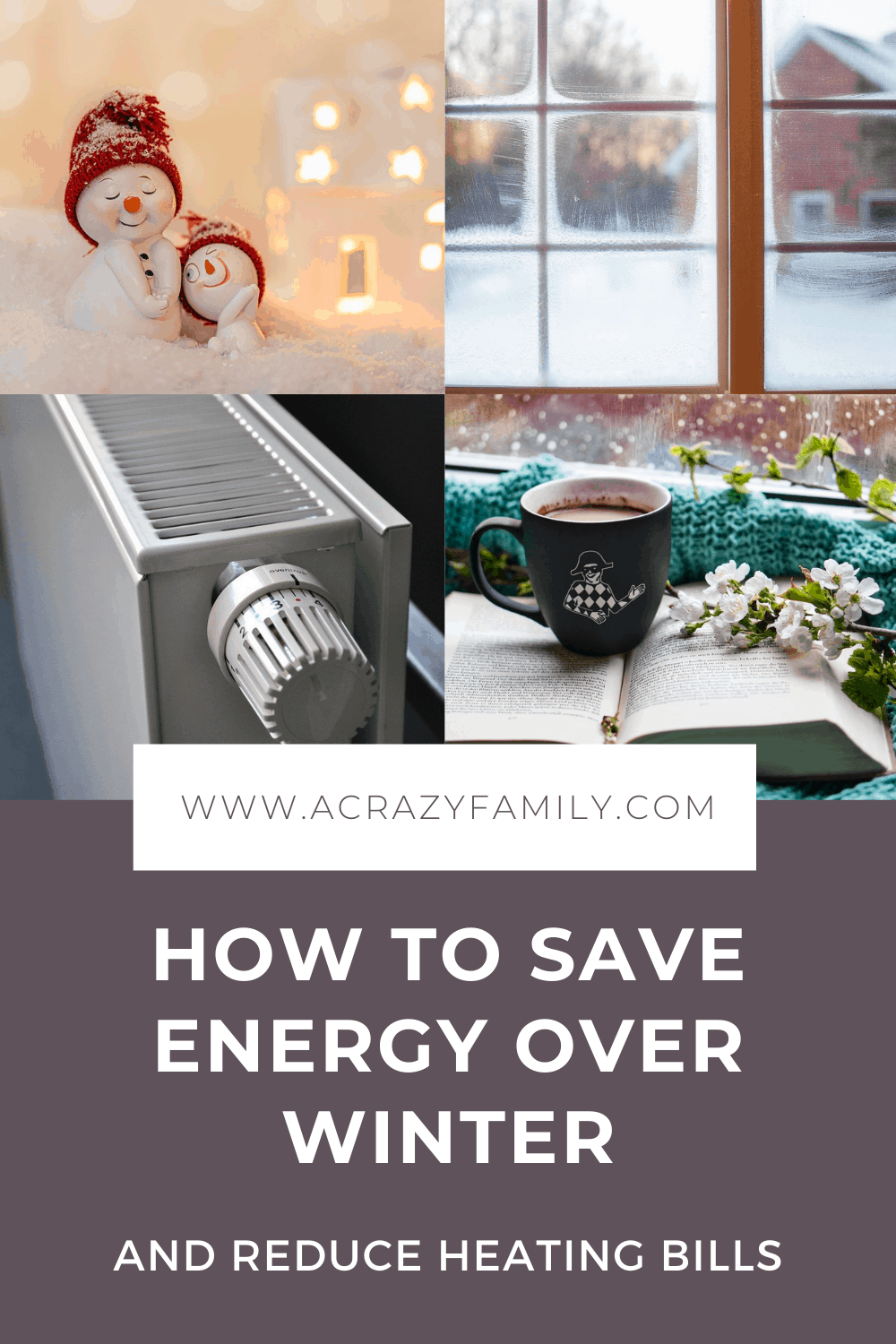With fall and winter now well underway, we’re at that time of year where the cost of heating goes right up. And not just for our bank balances – using heating has an environmental cost, too.
Thankfully there are some really simple winter energy-saving tips and tricks that you can start doing… Great for both your wallet and the planet!
Keep the heating off for as long as you can
This is an obvious one, but it’s so easy to fail at! As soon as it gets even slightly cold, it’s natural to want to warm up your house. But you don’t need to straight away, as your body will easily adjust to the colder temperatures.
If it helps, challenge yourself to keep it off for a specific time. I try and keep mine off completely until November, or until the temperature hits a specific low point.
It’s worth it – you’ll get better at dealing with colder temperatures, and the heating feels amazing once it’s on!
Once it’s on, stick to your central heating
Your central heating will likely be the most effective form of heating in your house. To conserve energy, it’s best to stick with it. Whilst it’s tempting to use other sources such as electric heaters, electric blankets, and so on, this will only result in far more energy being used.
Instead, choose a temperature for your central heating that works for you and try and rely only on that.

Choose the right energy provider
A lot of people just go with the energy provider they’re given because it’s seen as less hassle. This is what I did… Until I realized how much money I was wasting!
After shopping around to look at different deals I realized that you can get far cheaper energy bills simply by switching.
If you’re in the UK then you’ll know that the Big Six are super expensive, so I’d recommend looking at smaller options such as Bulb, which are cheaper and also far more eco-friendly.
It’s also a good idea to switch every so often, as different deals come up which can save a lot of cash.
Keep your doors closed
We all do it, but there’s no point heating a whole room only for it to escape out of the door. It’s a noticeable loss of heat, too! If you only heat specific rooms in your house then this is an absolute must.
It’s also worth remembering that bigger spaces take more energy to heat up. By leaving doors open, you’re making your radiators work harder which in turn increases both your expenditure and your energy usage.
Use draught excluders
Doors closed, yet the heat is still escaping? It might be that you need a draught excluder! Draught excluders are great objects that can really help keep the heat in.
If you haven’t seen one before, it’s essentially a material snake/sausage shape that you place at the bottom of the door to prevent the heat from escaping underneath.
You can buy draught excluders, or you can easily make them yourself – simply cut a leg off a pair of tights, stuff with rags or unwanted clothing, and sew up the end. Thrifty!
Fix or cover any draught zones
There might be other draught zones in your house besides your doors. Windows are often a culprit, or in older houses, there may be hidden holes and gaps where heat is escaping.
It’s a good idea to go over the house each year to identify any of these and fix them.
Holes can be filled, and windows can be fixed or covered to effectively add an extra layer of glazing. And if you’ve only got single-glazing, it might be time for an upgrade.

Choose layers over higher heating levels
Another of the more obvious winter energy-saving tips, but wearing warm clothes really pays off. Adorn your chunkiest knitwear and get your blankets out of storage!
This is a perfect replacement for heating and is far cheaper. The more layers the better, as layers trap heat and keep you warm.
It’s also lovely and cozy – add a hot chocolate and a good book for maximum coziness.

Keep your energy consistent
Without realizing it, many people spend more than they should on heating by playing around with it so much. It’s actually more energy-efficient to keep your heating on than turn it on and off.
This is because of the amount of energy used to heat up the devices after being cold – it’s not a huge amount, but it really does add up. It’s better to choose a temperature that you like and try and stick with it.
Keep your radiators clear
An open radiator will heat a room up very efficiently. A radiator that’s being blocked by a piece of furniture won’t, as said furniture will absorb all the heat and make it difficult for it to spread across the room.
The best thing to do is to rearrange your furniture so that radiators are kept clear where possible.

Air dry rather than tumble dry
Tumble dryers are used by many over the winter period, but they’re one of the least energy-efficient appliances out there.
They use so much electricity, and really add to your energy bills! Air drying is still completely possible during fall and winter… You might have to get a bit creative though.
The best thing to do is to buy a fold-out clothes horse, which makes placing washing really easy. Once dry you can just fold it away out of sight.
You can also use banisters and other thin surfaces should you run out of space. Or you can buy washing hangers that hook over the radiator!
These are really great and take up minimal space, however, remember not to hang your clothes directly on the radiator – this makes it work harder, which leads to greater energy consumption.
What are your top winter energy-saving tips and tricks? Share your tips below, and don’t forget to like and pin if you enjoyed this post?
If you’re looking to become more environmentally friendly then you may enjoy this post on how to be more sustainable in the kitchen.
